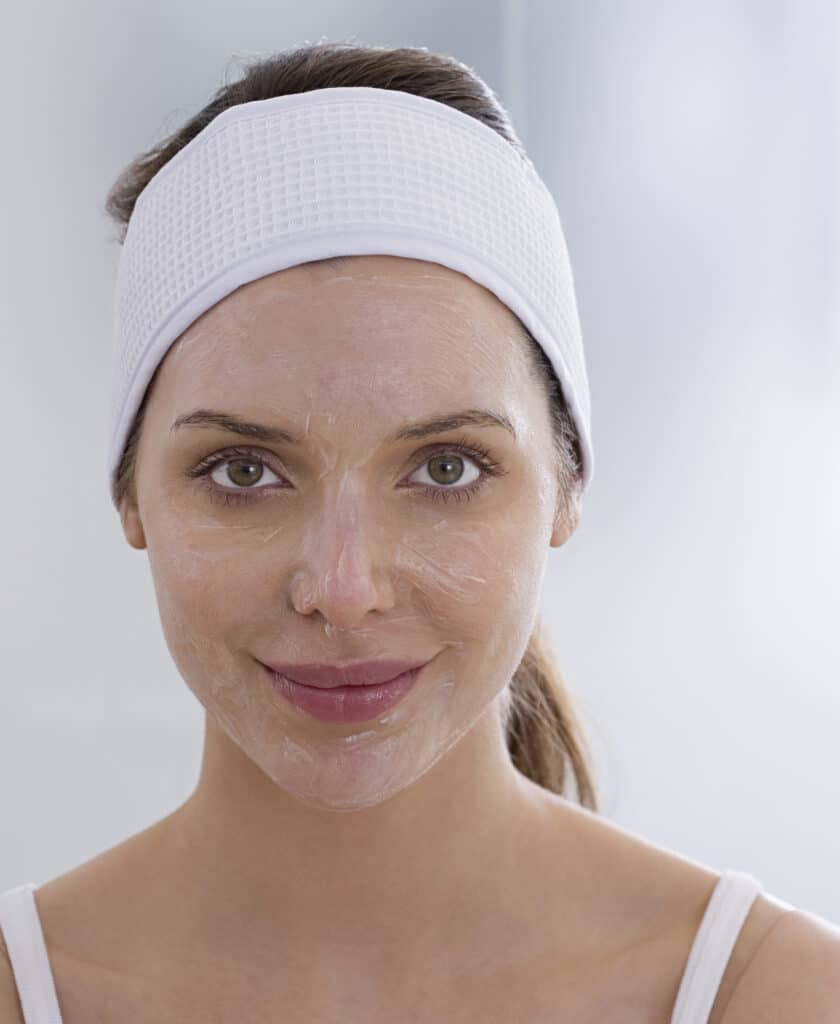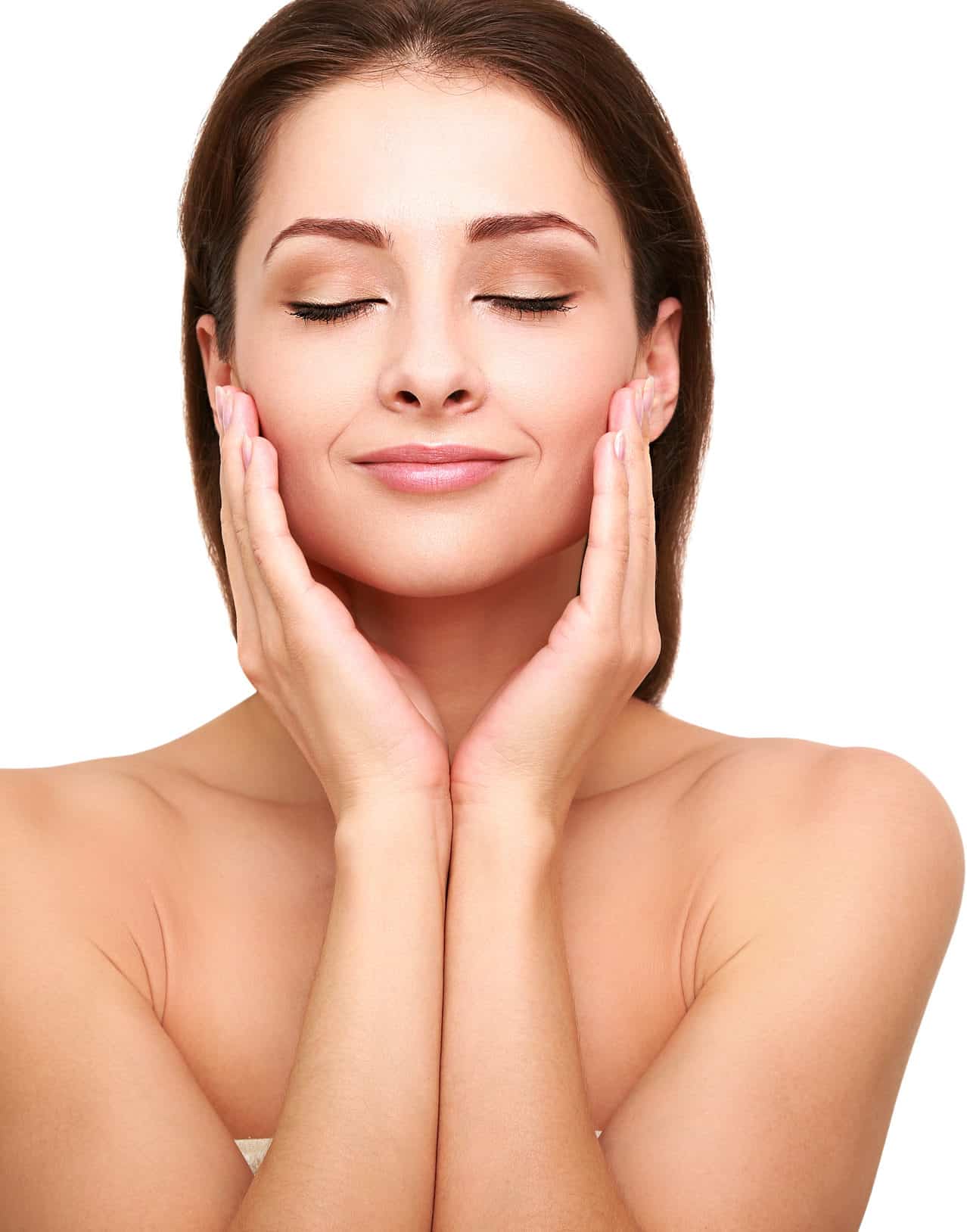Chemical Peels in New York City

Periodic peeling of the skin helps stimulate cellular activity and can be used for addressing a variety of skin issues: from age spots to acne, enlarged pores to pre-cancerous growths. At Laser & Mohs Dermatology of New York we offer chemical peels that exfoliate either lightly, moderately, or aggressively depending on the chemical used.
What Is a Chemical Peel?
Most people don’t think of their skin as an organ, but it is, the largest organ of the human body. Our skin is comprised of three layers: the epidermis, the dermis, and the fat layer. Chemical peels primarily deal with the epidermis, blistering the upper layer, but can also penetrate the dermis layer. The surface skin loosens and eventually peels off, allowing new, unblemished skin to take the place of the older, dead and damaged cells. Chemical peels are an easy, non-invasive option for skin rejuvenation. Cleopatra was one of the earliest proponents of chemical peels. She used sour milk, which contains lactic acid, as the peeling agent. Romans also used the tartaric acid found in grapes.
What Skin Problems Can Chemical Peels Treat?
Chemical peels do not address deep facial lines and they cannot tighten loose, sagging skin. But they are excellent for these skin conditions:
- Sun damage
- Fine lines and wrinkles
- Texture issues
- Pigmentation problems
- Age spots
- Acne and acne scars
- Freckles
- Scaly patches
Types of Chemical Peels
At Laser & Mohs Dermatology, we offer three different types of chemical peels including:
Light Chemical Peels
A light chemical peel makes use of glycolic acid or salicylic acid and is the mildest form of the treatment.
What Issues Can A Light Chemical Peel Treat?
Superficial chemical peels are excellent for exfoliating the outermost layer of the epidermis, removing dead and damaged skin cells and refreshing the skin’s glow. We use light peels for the following:
- Dry skin
- Fine wrinkles
- Improve acne
What Chemicals Are Used In A Light Chemical Peel?
We usually use naturally derived alphahydroxy acids for these peels: glycolic acid (derived from sugar cane, grapes, or sugar beets), lactic acid (derived from sour milk), or salicylic acid (derived from plants).
Light Chemical Peel Recovery
After your first few light peels, your skin may have some redness and irritation, but as your skin becomes more exfoliated this will pass and your skin will simply glow after your peel. Because of its mildness, a light chemical peel can be administered to the patient once a week for up to six weeks, depending on the results that they want to achieve.
Medium Chemical Peels
A medium chemical peels not only removes skin from the outermost layer but also from portions of the upper part of the middle layer of the skin or the dermis. For this purpose, trichloroacetic acid may be used in combination with glycolic acid.
What Issues Can A Medium Chemical Peel Treat?
Medium-depth peels penetrate more deeply, into the dermis layer. We use them to treat the following:
- Acne scars
- Deeper wrinkles
- Uneven pigmentation
Medium Chemical Peel Recovery
The peeling agent is trichloroacetic acid. Medium peels will require some recovery time, as they leave the skin red and stinging. There will be some crusting, and the redness can linger for up to a few weeks. Medium peels can be repeated, but not more than three or four times per year.
Deep Chemical Peels
These are the most aggressive chemical peels using phenol acid as the peeling agent.
What Issues Can A Deep Chemical Peel Treat?
Deep peels penetrate into the lower dermal layer and can address the following:
- Deeper wrinkles
- Sun damage
- Pre-cancerous growths
- Blotchy skin
- Scars
Preparing For A Deep Chemical Peel
Prior to receiving a deep peel, patients first do some pre-treatment at home to prepare their skin for the procedure. Immediately before the peel, the patient will receive local anesthetic and a sedative, if requested, to help manage any discomfort.
Deep Chemical Peel Revocery
Deep chemical peels are an aggressive skin treatment and require recovery time. The patient will have peeling, crusting, swelling, and redness for several days after the peel. Redness can remain for up to three months, and the use of sunscreen is paramount, as your skin will be very fragile.
How Often Can I Have A Deep Chemical Peel?
Due to their aggressiveness, deep chemical peels can be done no more than once per decade.
How Does A Chemical Peel Work?
During the procedure, the doctor usually uses a cotton-tipped applicator to apply the chemical solution onto the patient’s skin. As the chemical reagents come in contact with the skin, it will begin to change color as the solution facilitates the peeling process.
How Long Do Chemical Peels Take?
Light chemical peels may take up to 10 minutes; medium chemical peels 20 minutes, and deep chemical peels anywhere between 60 to 90 minutes to complete.
Can Chemical Peels Be Performed With Other Treatments?

Do I Need to Avoid Anything Before Having Chemical Peel Treatment?
All chemical peels work by creating a reaction within the superficial layers of your skin. To get the best results with the fewest side effects, we want your skin to be in its best condition at the time of treatment. To achieve this, you should avoid the following before your chemical peel appointment:
- Excessive sun exposure (apply broad-spectrum SPF 30 sunscreen daily).
- Products containing alpha or beta-hydroxy acids, benzoyl peroxide, and retinol.
- Hair removal using laser light, electrolysis, waxing, or depilatory cream.
- Topical medications like Retin-A.
- Other professional treatments like laser resurfacing or hair removal, injectables, and microneedling.
Do I Need to Avoid Anything After Getting a Chemical Peel?
It’s important that you follow the aftercare instructions provided to you. These may be specific to the type or strength of peel that you’ve had. In a more general sense, there are ways in which you can take care of your skin to support better overall tissue recovery. After your chemical peel, you should avoid the following:
- Picking at your skin. Depending on the strength of your peel, you might experience dryness, flaking, or full peeling. It’s important to allow cellular turnover to occur on its own.
- Exfoliating. Rubbing your skin with abrasive ingredients or items can exacerbate redness and other side effects. There’s even a risk of scarring if you exfoliate too soon after a chemical peel.
- Sun exposure. You should wear broad-spectrum SPF 30 sunscreen after any peel, even a light treatment. If your peel is deeper, also wear a wide-brimmed hat for a week or two.
- Letting your skin get too dry. There are a few ways to support optimal moisture. One is to wash your face using a gentle, creamy cleanser. Another is to wash your face with lukewarm water. Also, apply a recommended moisturizer after every wash and after patting the skin with a towel.
- Applying too much moisturizer. You want your skin to be well moisturized and protected but not so much so that the intended flaking and peeling don’t happen.
- Tolerating discomfort when you don’t have to! Some chemical peel treatments can cause the skin to feel hot, like it’s sunburned. You might feel stinging, as well. You don’t have to suffer from these side effects. To maintain comfort, apply cool compresses as needed.
- Dehydration. Your skin needs a lot of hydration while recovering from chemical peel treatment. In addition to moisturizing topically, keep your skin in regenerative mode by drinking plenty of water throughout the day. Another way to avoid dehydration is to avoid excessive alcohol consumption. Limit yourself to one nightcap or one glass of wine a day.
Can Anyone Get a Chemical Peel?
Most people can benefit from chemical peel treatments. These services can be preventive or corrective in nature. The few contraindications that exist include:
-
- Women who are pregnant or nursing.
- People who have taken Accutane (Isotretinoin) in the previous 12 months.
- People with an aspirin allergy.
- Patients who have recently undergone radiation or chemotherapy.
- Patients who are immunocompromised or have an autoimmune condition such as lupus.
- People with active cold sores or a skin infection in the intended treatment area.
- Patients with vitiligo.




